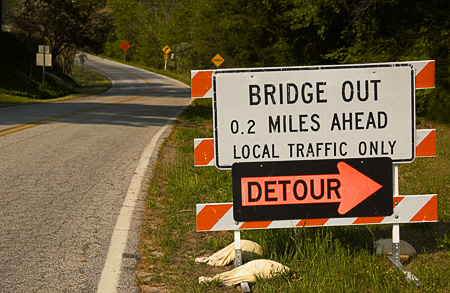"Evidence does not support the conclusion that wind turbines cause or are associated with adverse health outcomes"
"Gaps remain in our knowledge of the impact that wind energy may have on human health"
-Dr. Jevon McFadden, "Wind Turbines, a Brief Health Overview", slide 76 Prepared for the Wisconsin Wind Siting Council. Dr. McFadden delivered a shorter version of this presentation to the council on May 17th, 2010
Ontario Health and Environmental Officials Agree: On-the-ground sound measurement is needed near wind farms.
SOURCE: The Acoustic Ecology Institute, aeinews.org
May 28 2010
Over the past week or so, two reports from Ontario have spurred a fair amount of notice and comment among those following wind development issues.
First, the provincial health office responded to the public’s concerns about health problems reported by some wind farm neighbors, framing its answer carefully and narrowly: ”According to the scientific evidence, there isn’t any direct causal link between wind turbine noise and adverse health effects,” said Dr. Arlene King, Ontario’s Chief Medical Officer, as reported by the Vancouver Sun.
It is no real surprise that the sound levels near wind farms aren’t loud enough to directly cause physiological damage or effects, though it seems clear that annoyance and sleep disruption may well contribute to health effects; the report acknowledges the likelihood of some annoyance, and notes too that while low-frequency sound is below generally perceptible levels, some people who hear these frequencies better than most may be bothered.
While the report itself is brief and lacks the detail of the recent industry-funded AWEA/CanWEA report, which reached the similar conclusions in the same narrowly-focused task, King’s report frames the results with two crucial but under-reported observations:
By way of introduction, the report explicitly states a simple fact that is rarely acknowledged: “Little information is available on actual measurements of sound levels generated from wind turbines and other environmental sources.
Since there is no widely accepted protocol for the measurement of noise from wind turbines, current regulatory requirements are based on modelling.” Indeed, sound models are used to determine what distance a turbine needs to be from nearby homes in order to meet local statutory noise limits (which stand at 40dB in Ontario).
And in its final words, the report stresses the corollary to this observation: “The review also identified that sound measurements at residential areas around wind turbines and comparisons with sound levels around other rural and urban areas, to assess actual ambient noise levels prevalent in Ontario, is a key data gap that could be addressed.
An assessment of noise levels around wind power developments and other residential environments, including monitoring for sound level compliance, is an important prerequisite to making an informed decision on whether epidemiological studies looking at health outcomes will be useful.”
Actual rural ambient noise levels are often very low, so that wind farm noise becomes bothersome at lower levels than industrial or transportation noises prevalent in urban and suburban areas; and, as noted in the body of the report, most of the case studies and other reports of health effects lack any clear information on how loud the turbine sounds are in the homes of those being affected.
So while this report is in large part another seemingly definitive, yet stubbornly partial, assessment of the health effects reported near wind farms, it also lays the groundwork for much-needed on the ground assessment of noise patterns around wind farms.
On a similar note, Ontario Ministry of Environment officials confirmed this week that they do not have the capability to record or assess the noise near wind farms where noise complaints arise.
According to the Windsor Star, “Although hundreds of wind turbines have already been built in Ontario, Michael Parker, district manager for the environment ministry, said staff have not yet been given noise-monitoring equipment. The ministry is responsible for ensuring that wind turbine noise reaching a residence doesn’t exceed 40 decibels, he said.
If a complaint about turbine noise is made to the ministry, two environment officers are sent to the area to listen for the noise and contact the turbine owner, Parker said, noting that the ministry could still intercede with turbine owners even without hard data on the noise levels.
In some cases, turbine speeds have been scaled back or the turbine shut down completely.”
In January, the Ministry of Environment issued two Requests for Proposals seeking advice and technical standards to use in assessing wind farm noise.
The RFPs said that “The Ministry requires a consultant to assist in the development of a measurement procedure to assess noise compliance of existing wind farms with the applicable sound level limits,” noting that ”Unlike typical industrial noise sources, measurement of audible noise from wind turbines in general raises technical challenges.”
At that time, the Ministry acknowledged that its “Noise Guidelines for Wind Farms…do not contain a measurement method for assessing the actual noise impact.”
SECOND FEATURE:
When is a conflict of interest not a conflict of interest?
When an official who stands to make some money says it is not and just 'leaves it at that'
Click on the images below to watch news stories about what happens when those who make the rules anticipate financial gain.
For those of us following the proceedings of Wisconsin's Wind Siting Council, this is an issue very much on our minds. It is impossible not to notice a clear majority of the council members have direct or indirect financial interest in the outcome of the siting guidelines they are helping to create. CLICK HERE TO SEE WHO IS ON THE COUNCIL
VIDEO SOURCE: http://www.wnem.com
